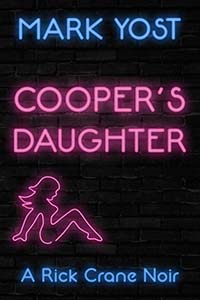

By Mark Yost
Houston, TX, USA
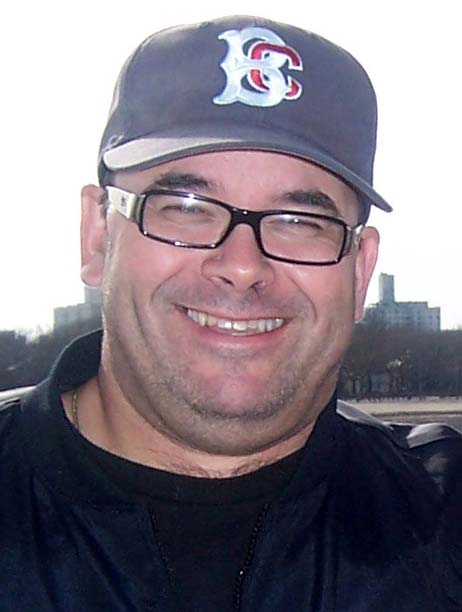
Mark Yost
I literally never saw him coming.
It was about 9:30. Just getting to be dusk in northern Europe in early May.
I'd been up for nearly 40 hours.
I'd flown in from the U.S. that morning and then drove halfway across Belgium to Ypres, the little town on the French border that British troops had lived and died around by the tens of thousands from 1914-1918 and decided, in their cockneyed accents, should be called "Wipers."
And then…BAM.
At first, I didn't know what had happened. I was dazed from the massive hit that I'd just taken. The fog in my brain was made thicker by the smoky haze inside the passenger compartment of my Peugeot rental car when literally every air bag went off within milliseconds of each another.
As I tried to gather my wits, I looked out through the cracked windshield. Part of the hood was tee-peed up. More smoke and steam was rising from under the hood of the car. Parts of the right-side tire, suspension and what looked like the engine had come through the firewall into the passenger compartment.
As my eyes adjusted and my brain began to work again, I saw a massive delivery truck – probably about six tons – just off the right front quarter panel of the mangled car. Just then, the driver's side door opened and out stumbled a heavyset man in dirty blue jeans, a blue button-down shirt, and a faded brown canvas jacket. He looked as confused as I felt.
His eyes were bloodshot. I wasn't sure if he was tired from having driven all day, or he'd had too much to drink at the local brasserie after what had been, for him, the end of another long workweek.
As I sat there, still stunned from the crash and belted into the driver's seat, the truck driver didn't waste any time. He quickly assessed the damage to his truck (minimal), the damage to my car (significant), and decided he'd better leave. And fast.
Before I could even process all of this, he was gone. Down the road toward Lille or who knows where. I didn't know his name. I didn't get his license plate number. There wasn't even any lettering on the side of the white truck. I knew nothing about him, where he was from, or where he was going.
What I did know was that I was on a two-lane road somewhere north of Lille. I didn't speak French as well as I had when I'd lived here in the 1990s. I didn't have much money in my bank account, hoping that I could complete this trip on a shoestring budget. And the rental car I'd checked out of the Brussels airport some eight hours ago was pretty much destroyed.
In short, I was screwed.
"God," I thought. "I hope my insurance or credit card covers overseas rentals."
Whether it did or not, this was not the trip that I'd had in mind.
I came to France and Belgium to write two pieces for The Wall Street Journal Leisure and Arts page ahead of the 100th anniversary of the first "war to end all wars." I've always loved history. Especially military history. I grew up on the knee of my father, a cardio-thoracic surgeon who'd served in a MASH unit in Korea before going to work for the Veteran's Administration after the war. The only thing he loved more than showing my friends how he could tie knots with one hand, was reading and talking about Patton and World War II.
It wasn't until high school that I got interested in World War I. Mrs. Ormsby made us read All Quiet on the Western Front in 10th-grade literature class. In my senior year, I took an advanced history elective on World War I and actually got to interview some vets that lived at the VA Center where my dad worked. So when Dow Jones sent me to Brussels in 1994 to work for The Wall Street Journal Europe, it was only a matter of time before I started tromping across what I found to be the very well-preserved battlefields, cemeteries and monuments along the Western Front.
Verdun.
Belleau Wood.
The Somme.
Ypres.
I'm not exaggerating when I say that I know the farm roads around Albert, Chateau Thierry and Passchendaele as well as I know the streets of Brooklyn. I also know the best monuments, the most solemn ceremonies, and the most moving stories of what the British call "The Great War," and the French call "Le Grand Gare."
In short, this should have been an easy trip. And, at first, it was.
I landed in Brussels about noon, picked up my rental car and drove to Drogenbos, a small town about 10 miles southwest of the Belgian capital. I wanted to stop there to pay my respects to Jacques Garain, a World War II veteran who had befriended me when I lived there in the '90s.
Jacques had been 16 when the German tanks had rolled down Avenue Louise in 1940. He fled across France, made his way to a Belgian Resistance camp in the Pyrenees, and returned home to finish high school and act as a courier for the Underground. When Brussels was liberated, he joined the Fusiliers, the Belgian tank unit that served with Patton.
Like many men his age, serving in World War II had been the defining experience in Jacques' life. And he never forgot what the Americans had done for him and the rest of Europe. He'd died in 2000, and I'd never been to his grave. But here is what I wrote about him in The Wall Street Journal Europe:
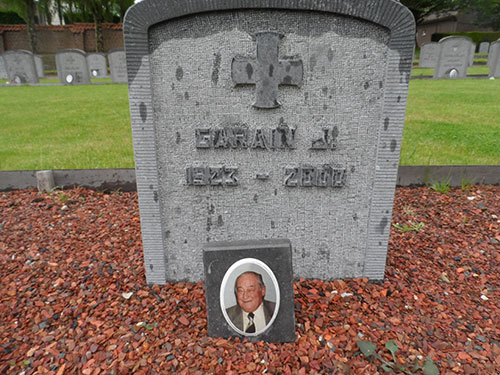
Grave of Jacques Garain
"Characteristic of his generation, Jacques's own tales were never imbued with an air of braggadocio, but rather unrelenting pride. As president de la fraternelle General Patton, the society of Belgian soldiers who fought with Patton, Jacques dedicated himself to reminding people of the sacrifices of World War II.
'We must never forget,' he would say about the sacrifice the Americans made for Belgium and the rest of Europe."
When I was preparing to leave Belgium in 1997, I met him for a farewell drink. As we said our goodbyes, I realized how very fortunate I'd been to meet this humble and gentle man who'd seen so much horror in his life. In one of the few emotional moments of our friendship, tears streaming down my face, the full impact of his service weighing upon me, I said, "I'll make sure we never forget what you did. Thank you."
"No, thank you, Mark Yost," he said in his heavily accented English. "For without the American army we would all be slaves."
I actually had very little trouble finding his grave. There's a flower shop in the middle of Drogenbos.
The owner pointed across the street and made a gesture behind the city hall. After buying a bouquet from her, I walked behind the building, through a gap in the hedgerow, and found the path leading to the cemetery. Following the graves chronologically, I quickly found Jacques. Standing at his grave was powerfully emotional. I stood there for about 10 minutes, thinking about our friendship and his life. I placed the flowers on his grave and then went to the café next to the flower shop and drank a Jupiler – the Belgian beer equivalent of Budweiser – and toasted Jacques.
If the trip had ended there, it would have been a success. But my journey had just begun.
Next, I took N8, a two-lane road, across Belgium to Ypres. The small town on the French border is famous for a few reasons. It was one of the first places that the Germans used gas, against the Canadian's, in April 1915. The St. Julien Canadian Memorial is an 11-meter high piece of granite topped with a carved image of a solemn Canadian soldier, his head down. In fact, locals call it "the sleeping Canadian" and often use it as a landmark when giving directions.
Just down the road is the German cemetery at Langemark, which is interesting because of the different attitude the Germans have toward remembering their war dead. American and British (and, to some degree, French) cemeteries are very much bright, open places, with white headstones. The cemeteries are very much a celebration of the sacrifices of those buried there.
The Germans cemeteries are like a scene out of a Wagner opera. They are very dark, very solemn places. In contrast to the British and American cemeteries, the Germans use dark stone for the walls and headstones, and plant dark trees in and around the plots. In fact, you can go into the Langemark cemetery on a bright sunny day and it's like suddenly there was an eclipse. The sun and most light disappears, creating a very dark, very surreal atmosphere. And the Germans use mass graves. So while there are only a few hundred headstones in the cemetery at Langemark, there are 44,000 Germans buried there.
But the most important reason to come to Ypres is the "Last Post" ceremony. It takes place every night at 8 p.m. and has taken place every night at 8 p.m. since 1919 (except, of course, during the early 1940s, when the country was under new management). In September 2015, Ypres will hold its 30,000th Last Post.
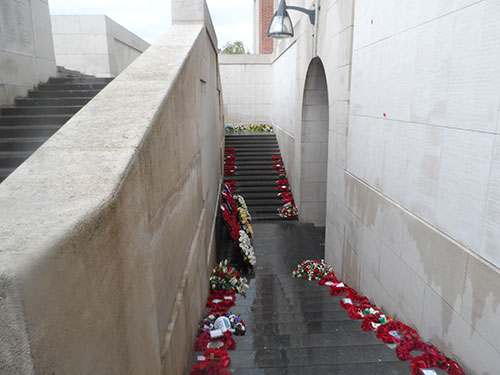
Wreaths at Menin Gate
The nightly ceremony takes place beneath the Menin Gate, best described as a miniature Arch d'Triomphe that is engraved with the names of the nearly 55,000 British soldiers who were killed in and around Ypres but whose remains were never found. A three-man Ypres Fire Department honor guard comes out every night and plays the "Last Post," which is somewhat like taps but more of a fanfare. Most nights, there are a handful of British veterans groups here to lay wreaths at the memorial.
When I first started coming to Ypres in the mid-1990s, the ceremony drew maybe 200 people a night, mostly Brits. Today, it draws about 1,500, a number that's only expected to grow with the 100th anniversary of the war on July 28, 2014. It is truly a moving ceremony, both because of what it commemorates and for how long it has taken place.
I had just attended the Last Post on May 9 and was on the way to my hotel in Lille when I was hit by what I still think was a drunk driver. I will tell you that I did make it to my hotel later that night. And though sore and bruised, I got up the next morning, found the subway, made my way to the Gare de Lille Flandres, one of Lille's central train stations, and did finish the rest of my assignment for The Wall Street Journal.
But that's not the amazing part of this journey. What will be the most lasting memory for me from this trip is what happened shortly after I was hit by the drunk driver. People began coming out of their houses along route D654 in the tiny town of Perenchies, a suburb of Lille and a mere four kilometers from my hotel in Lomme.
"Ca va?" – "Are you OK?" – they asked from doorways and windows that opened after hearing the loud crash on an otherwise quiet night. It was obvious that they were sincerely concerned about me, a mere stranger who had suddenly appeared in their world on an otherwise normal Friday night. More than that, a handful of them stayed with me for the next two hours.
They asked if I needed a doctor. They asked me if I wanted them to call a tow truck.
"How much is that?"
"Four hundred euros," said the one man, whose name I regretfully never got, but I'll call Henri.
"I don't have four hundred euros," I said.
"Then we'll call the police," Henri said. "It's free."
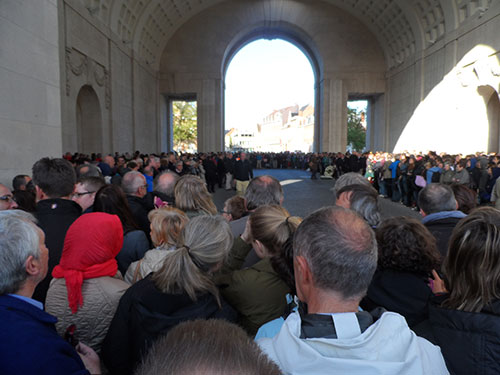
Last Post Ceremony at Menin Gate
(Welcome to France)
Another neighbor took my rental contract and tried to call the company.
"You are in France," he said to me, somewhat embarrassed, through Henri. "You rented the car in Belgium. So the company in France cannot help you."
They asked me if I wanted something to drink.
"Oui. Merci."
A woman brought me a Coke.
They asked me if I wanted anything to eat.
"No, merci."
They asked if there was anything else they could do for me.
There wasn't.
When the police finally arrived 45 minutes later, Henri again acted as the interpreter.
When the tow truck arrived an hour and a half after that, and the police asked if I needed a ride to my hotel, Henri said, "I will take him."
And he did. He also came inside at nearly midnight, with his two small children in tow, to explain what had happened to me. Again, my French isn't as good as it used to be, but I know that he told the hotel clerk to keep an eye on me.
By the time I crawled into bed, exhausted, having been awake for close to 48 hours, there was a part of me that wanted to cry. If the impending and inevitable fight with the rental car company doesn't go my way, it could potentially ruin me financially.
But instead of wallowing in my misery, I mostly smiled.
Mostly.
Because amid it all, I realized that I had been lucky that the drunk truck driver had plowed into me in front of the homes of these very kind people. More importantly, looking at the car and then looking at me, they kept telling me that I was lucky to be alive.
They were right.
I was.
Their words also made me think beyond my own well being as I laid there in a strange bed, in a foreign country, far from home, my hopes almost dashed. My 15-year-old son, George, is nearly my constant companion on these adventures. Fortunately, he didn't make this trip. If he had, he clearly would have been killed.
So, thanks to the people of Perenchies for giving me some perspective.
I must have told them "Merci" a hundred times that night. But I know that someday I'll go back with George. I'll find Henri and his neighbors and say "Merci" again.
Links:
Mark Yost's Profile at Stay Thirsty Publishing
Mark Yost


